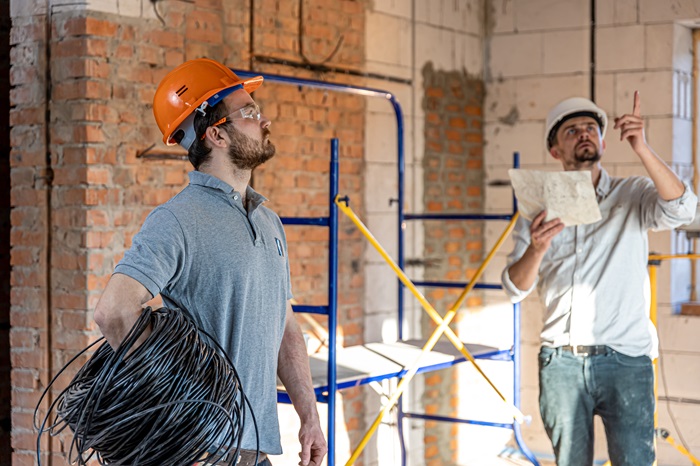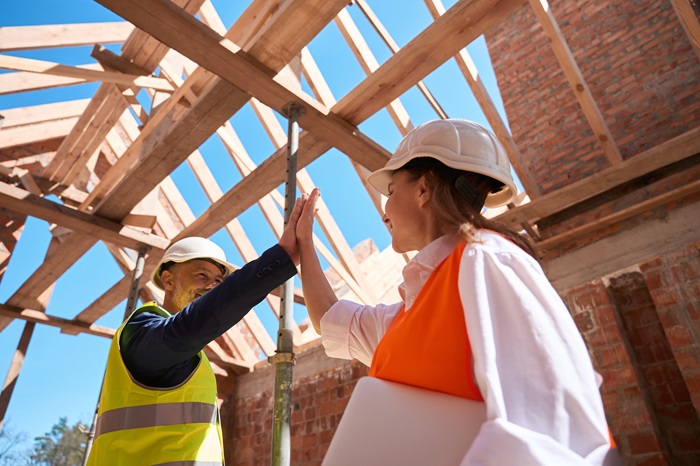
In the realm of architecture and urban development, the process of restoring old or dilapidated structures holds a profound significance. It’s not merely about refurbishing brick and mortar; it’s about breathing life back into historical edifices, revitalizing neighborhoods, and preserving cultural heritage. In this article, we delve deep into the craft of building restoration, exploring its nuances, challenges, and the transformative power it holds.
Unveiling the Essence of Building Restoration:
Restoration is more than just a cosmetic makeover; it’s a meticulous endeavor aimed at honoring the past while embracing the future. It involves a harmonious blend of artistry, engineering prowess, and historical understanding. Picture this: a centuries-old cathedral weathered by time, its ornate façade marred by neglect. Enter the restoration experts, armed with a passion for preservation and a keen eye for detail. Their mission? To uncover the hidden beauty within, to breathe new life into every weathered stone and faded fresco.
Exploring the Role of Commercial Restoration Contractors:
When it comes to undertaking monumental restoration projects, the expertise of commercial restoration contractors is indispensable. These seasoned professionals possess the skill set and resources to tackle even the most daunting endeavors with finesse. From historic landmarks to heritage buildings, their prowess extends across a myriad of architectural marvels. But what sets them apart? It’s not just their technical proficiency, but also their unwavering commitment to preserving the integrity of each structure they touch.
Restoration vs. Renovation: Understanding the Distinction:
Before delving further, it’s crucial to delineate between restoration and renovation. While the two terms are often used interchangeably, they entail distinct approaches and objectives. Restoration seeks to preserve the original character and historical significance of a structure, retaining as much of the original fabric as possible. Renovation, on the other hand, involves modernizing or updating a building to meet contemporary standards, often involving alterations to its original form.
The Science of Preservation:
At the heart of building restoration lies the science of preservation. It’s a delicate balance between conserving the past and embracing the future. Preservationists employ an array of techniques, from chemical analysis to structural stabilization, to safeguard architectural treasures for generations to come. Through meticulous documentation and careful planning, they ensure that each restoration endeavor is rooted in authenticity and reverence for history.
The Intricacies of Emergency Restoration:
While restoration projects often unfold at a leisurely pace, there are instances where urgency is paramount. Natural disasters, fire outbreaks, or structural failures can wreak havoc on buildings, demanding swift intervention. This is where emergency restoration companies step into the fray, offering rapid response and expert remediation services. In the face of adversity, these frontline warriors work tirelessly to salvage what can be saved, mitigating further damage and restoring hope amidst chaos.
Navigating the Challenges of Building Restoration:
While the rewards of building restoration are manifold, it’s not without its challenges. Preservation projects often encounter hurdles ranging from budget constraints to regulatory red tape. Moreover, the inherent complexities of working with aged materials and delicate craftsmanship require a deft touch and unwavering patience. Yet, it’s these very challenges that fuel the passion of restoration professionals, driving them to overcome obstacles and leave a lasting legacy of revitalized spaces.
Embracing Innovation in Restoration Practices:

In an age of technological advancement, innovation plays a pivotal role in the field of building restoration. From 3D scanning to laser cleaning, cutting-edge technologies are revolutionizing the way we approach preservation projects. These tools not only enhance efficiency and precision but also enable us to uncover hidden facets of history with unprecedented clarity. By embracing innovation, restoration contractors can breathe new life into antiquity, bridging the gap between past and present.
Embracing the Heritage:
Restoration isn’t just about preserving physical structures; it’s about honoring the stories they tell and the communities they serve. Each building holds within its walls a tapestry of memories, reflecting the aspirations and triumphs of generations past. By embracing our architectural heritage, we forge a connection to our roots, fostering a sense of pride and belonging that transcends time.
Preserving Cultural Identity:
One of the most profound aspects of building restoration is its role in preserving cultural identity. Historic landmarks and heritage sites serve as tangible links to our collective past, embodying the rich tapestry of diverse cultures and civilizations. Through thoughtful restoration efforts, we not only safeguard these cultural treasures but also celebrate the unique identities they represent, fostering a deeper appreciation for our shared heritage.
Sustainable Restoration Practices:
In an era increasingly focused on sustainability, building restoration offers a compelling solution to the environmental challenges posed by urban development. Unlike new construction, which often entails significant resource consumption and carbon emissions, restoration prioritizes the reuse and preservation of existing materials. By breathing new life into old structures, we minimize waste and reduce the ecological footprint of our built environment, paving the way for a more sustainable future.
The Economic Impact of Restoration:
Beyond its cultural and environmental benefits, building restoration also yields significant economic dividends. Revitalized historic districts attract tourists, stimulate local economies, and create jobs, driving economic growth and revitalizing communities. Moreover, restored buildings often command higher property values and rental incomes, providing a tangible return on investment for property owners and stakeholders.
The Human Element:
At its core, building restoration is a deeply human endeavor, driven by a passion for preservation and a commitment to craftsmanship. Behind every restored façade and meticulously preserved detail lies the dedication and expertise of restoration professionals, whose labor of love breathes new life into our architectural heritage.
It’s a testament to the enduring power of human ingenuity and creativity, reminding us of our capacity to transcend the boundaries of time and space.
Wrap-Up
Building restoration is far more than a technical process; it’s a labor of love, a testament to our collective reverence for history and our commitment to shaping a sustainable future. From the hands of skilled artisans to the halls of regulatory agencies, it takes a village to breathe new life into old structures and rejuvenate our urban landscapes. As we continue to navigate the complexities of urban development, let us remember the transformative power of restoration and the timeless beauty of revitalized spaces.
Are you ready to embark on your own restoration journey? Whether you’re a property owner looking to preserve a historic gem or a restoration contractor seeking to leave your mark on the built environment, we’re here to help. Contact us today to learn more about how our restoration contractor can bring your vision to life and breathe new life into architectural treasures for generations to come. Together, let’s create a future where the past is preserved, and the beauty of our architectural heritage shines bright.
FAQs
Q:What factors determine the success of a restoration project?
A: The success of a restoration project hinges on various factors, including thorough research and documentation, skilled craftsmanship, adherence to preservation standards, and effective project management. Additionally, securing adequate funding and navigating regulatory requirements are crucial for ensuring a successful outcome.
Q:How long does a typical restoration project take to complete?
A: The duration of a restoration project can vary widely depending on factors such as the size and complexity of the structure, the extent of damage or deterioration, availability of resources, and regulatory approvals. While some projects may be completed within months, others may span several years, particularly for large-scale or historically significant buildings.
Q:Are there any regulatory considerations involved in building restoration?
A: Yes, building restoration projects often require compliance with local, state, and federal regulations governing historic preservation, zoning, building codes, and environmental protection. This may involve obtaining permits, conducting environmental assessments, and adhering to specific guidelines for preserving historic integrity.
Q:Can modern amenities be integrated into restored buildings without compromising their historical integrity?
A: Yes, modern amenities can be integrated into restored buildings through thoughtful design and strategic planning. Preservation professionals often employ techniques such as adaptive reuse, where historic structures are repurposed to accommodate contemporary needs while preserving their architectural character. Careful consideration is given to maintaining a balance between preserving historical integrity and meeting modern functional requirements.